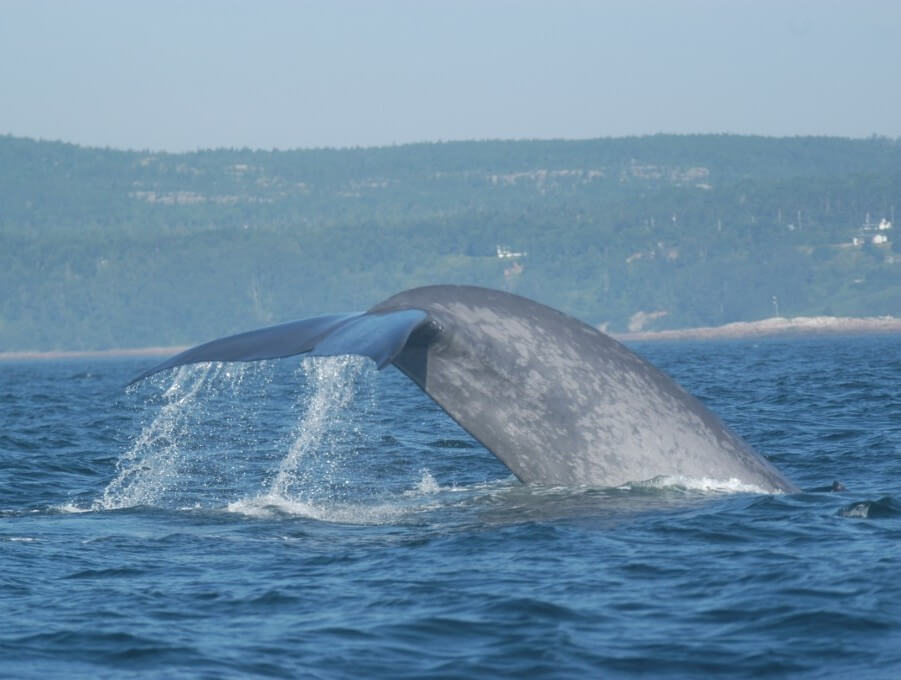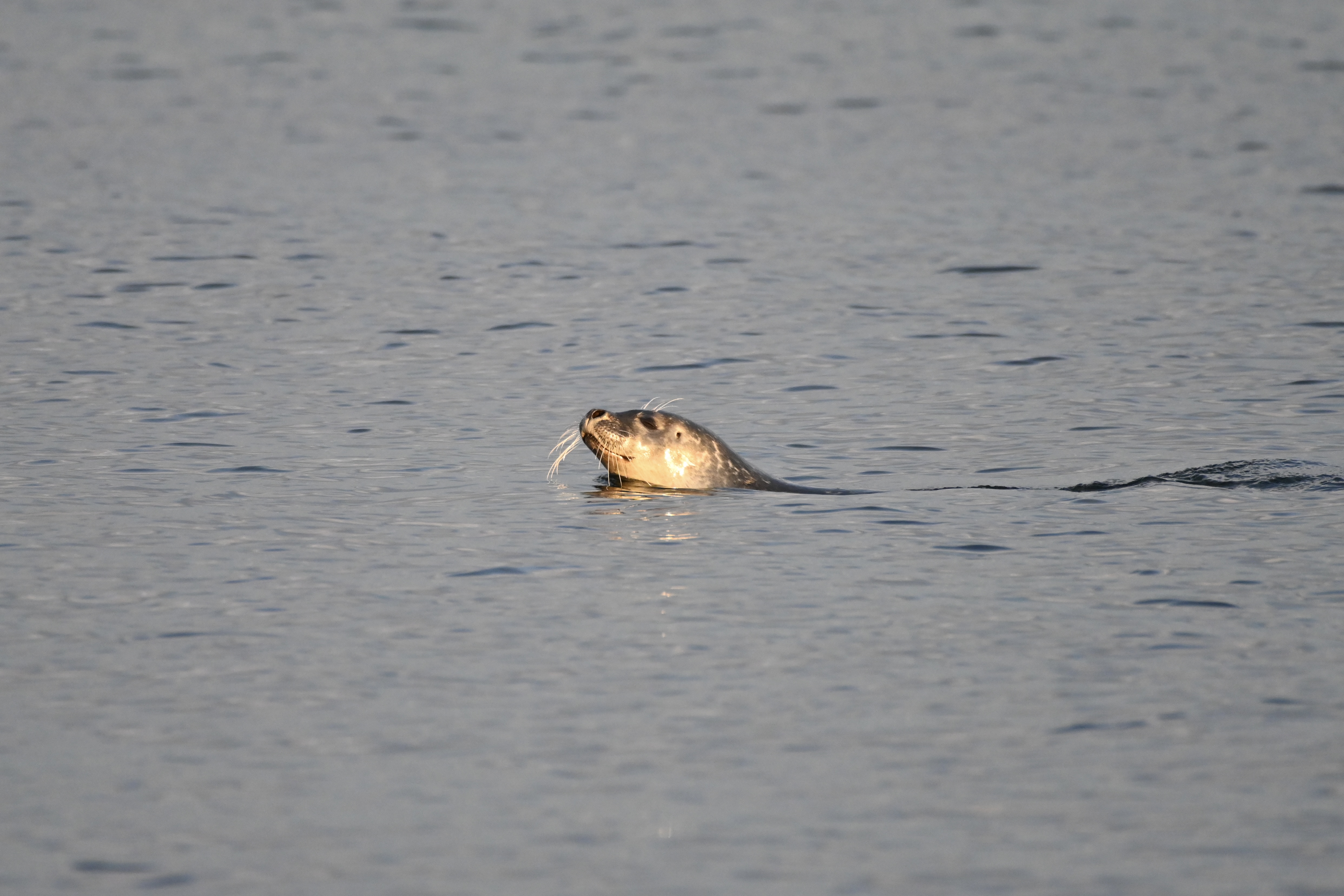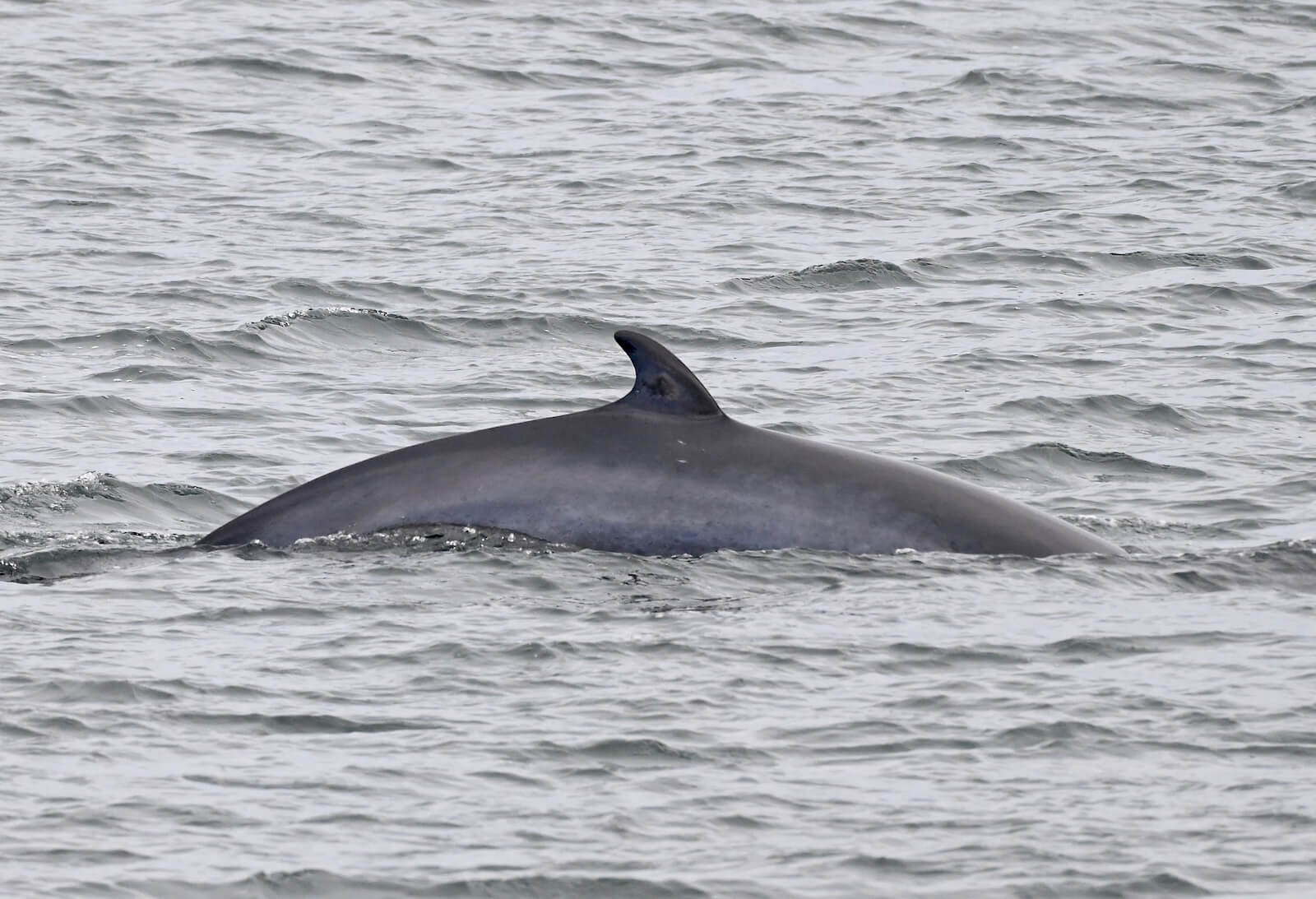A large column rises high into the air. “Fin whale or blue whale?” asks our Franquelin-based collaborator on the morning of October 1. Impossible to identify the species, as the animal is too far from the coast. Conversely, for an observer perched on a promontory at Portneuf-sur-Mer on October 3, there’s no doubt, the large spouts being blown before her eyes are those of five blue whales, with their characteristic light blue spotted skin. It was thanks to this “coat” that the blue whale seen off Bar Harbor, Maine on September 24 was recognized as female B353. Since 1979, MICS, which fine-tuned the individual identification method based on skin pigmentation patterns, has managed a catalogue of over 400 blue whales for the St. Lawrence.


These spouts are testimony to their breathing, which lasts a mere 1-2 seconds. The hot (37°C) air condenses upon contact with the colder outside air and forms a cloud. In addition to the difference in temperature, since the air exhaled is compressed, the difference in pressure between the lungs and the ambient air also causes condensation or vapour. In this mass of expelled air are also water and oil droplets from the upper respiratory tracts or the top of the blowhole. Spout characteristics vary by species according to the latter’s size and the structure of its blowhole, which is tantamount to the whale’s nose and is located on top of its head. The blue whale has a blowhole that measures between 40 and 50 cm in diameter. Powerful muscles are located at the front of the nostrils and form a visible V-shaped bump of flesh. These muscles are connected to two fibrous plugs which are inserted into the nostrils when the muscles are relaxed and prevent water from entering the blowhole. The spout of the blue whale is visible from several kilometres away, and can measure over six metres high. The spout of a humpback is as wide as it is high. This is the clue that tipped off a whale-watching employee from Percé who, on his last cruise of the year, headed to one side of Île Bonaventure to find three humpbacks on October 5.
Seeing these great ones blow is not always enough to identify the species; be careful not to jump conclusions. A number of factors influence the height and shape of the spout such as the wind, light conditions and the humidity of the ambient air. The spout of minke whales, usually inconspicuous, becomes more noticeable in colder temperatures. The height of the spout also depends on the activity of the animal. It will be more discrete when the whale is resting or minimally active, or when its dives are short and close to the surface.





